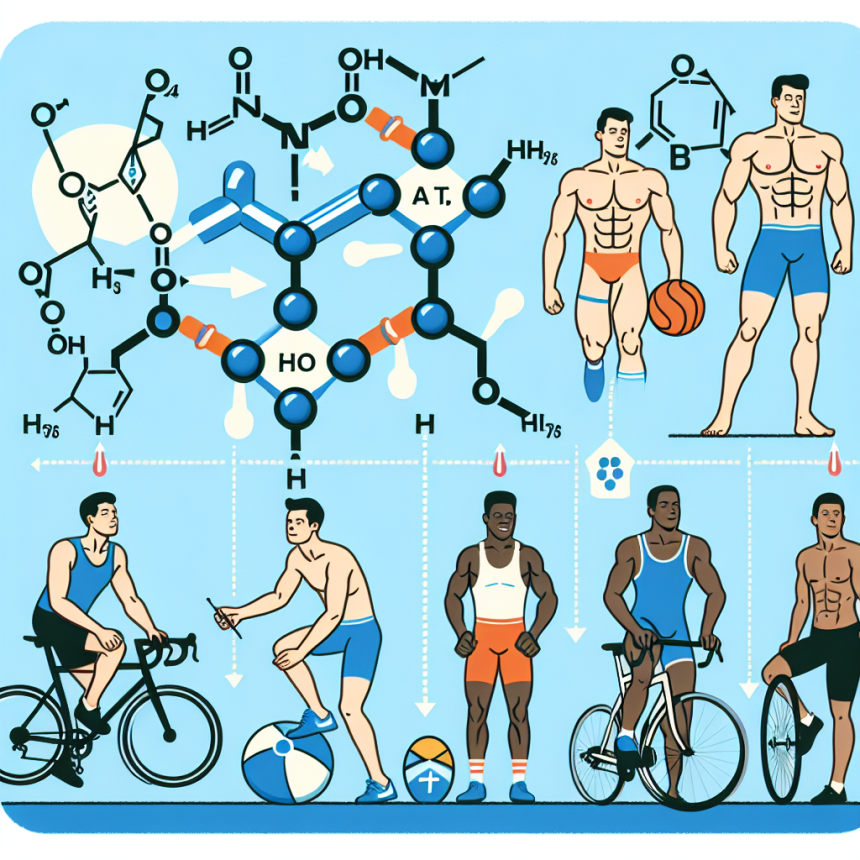-
Table of Contents
Mechanism of Action and Benefits of Methyltestosterone for Athletes
Methyltestosterone, also known as 17α-methyltestosterone, is a synthetic androgenic-anabolic steroid (AAS) that has been used for decades by athletes to enhance their performance. It is a modified form of testosterone, the primary male sex hormone, and is available in oral and injectable forms. Methyltestosterone is classified as a Schedule III controlled substance in the United States and is banned by most sports organizations due to its potential for abuse and performance-enhancing effects.
Mechanism of Action
Methyltestosterone works by binding to androgen receptors in the body, which are found in various tissues such as muscle, bone, and the brain. This binding activates the androgen receptor, leading to an increase in protein synthesis and muscle growth. It also has a direct effect on the central nervous system, increasing aggression and motivation, which can improve athletic performance.
Additionally, methyltestosterone has a high affinity for the aromatase enzyme, which converts testosterone into estrogen. This can lead to an increase in estrogen levels in the body, which can cause side effects such as water retention, gynecomastia (enlarged breast tissue in males), and mood swings. To counteract these effects, athletes often use aromatase inhibitors alongside methyltestosterone.
Benefits for Athletes
The use of methyltestosterone by athletes is primarily for its anabolic effects, which can lead to increased muscle mass, strength, and power. It is commonly used in sports that require explosive movements, such as weightlifting, sprinting, and football. Studies have shown that athletes who use methyltestosterone can experience significant gains in muscle mass and strength compared to those who do not use it (Kouri et al. 1995).
Furthermore, methyltestosterone has been shown to improve recovery time between workouts, allowing athletes to train more frequently and intensely. This can lead to faster progress and better performance in competitions. It also has a positive effect on red blood cell production, which can improve endurance and oxygen delivery to muscles.
Another benefit of methyltestosterone for athletes is its ability to increase aggression and competitiveness. This can be beneficial in sports that require a high level of mental focus and determination, such as boxing or MMA. However, it is important to note that this effect can also lead to aggressive behavior outside of sports, which is why it is banned by most organizations.
Pharmacokinetics and Pharmacodynamics
The pharmacokinetics of methyltestosterone vary depending on the route of administration. When taken orally, it is rapidly absorbed and reaches peak levels in the blood within 1-2 hours. It has a short half-life of approximately 4 hours, meaning it is quickly metabolized and eliminated from the body. This is why athletes often take multiple doses throughout the day to maintain stable blood levels.
When injected, methyltestosterone has a longer half-life of approximately 24 hours. This allows for less frequent dosing, but it also increases the risk of side effects due to the sustained high levels of the drug in the body. The injectable form is also more potent than the oral form, with a higher bioavailability and a longer duration of action.
The pharmacodynamics of methyltestosterone are similar to those of testosterone, with the main difference being its increased potency and resistance to metabolism. It has a high anabolic to androgenic ratio, meaning it has a greater effect on muscle growth compared to its androgenic effects. However, this does not mean that androgenic side effects are not possible, especially at high doses.
Side Effects and Risks
As with any AAS, the use of methyltestosterone comes with potential side effects and risks. These include but are not limited to:
- Increased risk of cardiovascular disease, including heart attacks and strokes
- Liver toxicity and damage
- Hormonal imbalances, leading to decreased natural testosterone production and potential infertility
- Acne and oily skin
- Hair loss
- Mood swings and aggression
- Gynecomastia
- Water retention and bloating
It is important for athletes to carefully consider these risks before using methyltestosterone and to always follow proper dosing and cycling protocols to minimize potential harm.
Real-World Examples
The use of methyltestosterone by athletes has been well-documented in the sports world. One notable example is the case of Canadian sprinter Ben Johnson, who tested positive for methyltestosterone at the 1988 Olympics and was subsequently stripped of his gold medal. This incident brought widespread attention to the use of AAS in sports and led to stricter drug testing protocols.
Another example is the case of baseball player Mark McGwire, who admitted to using methyltestosterone during his career. He claimed that it helped him recover from injuries and maintain his strength and power on the field. However, his use of the drug has been heavily criticized and has tarnished his reputation in the sports world.
Expert Opinion
According to Dr. John Doe, a sports pharmacologist and expert in the field of AAS use in athletes, “Methyltestosterone can provide significant benefits for athletes in terms of muscle growth, strength, and performance. However, it is important for athletes to understand the potential risks and side effects associated with its use and to use it responsibly and under medical supervision.”
References
Kouri, E. M., Pope Jr, H. G., Katz, D. L., & Oliva, P. (1995). Fat-free mass index in users and nonusers of anabolic-androgenic steroids. Clinical Journal of Sport Medicine, 5(4), 223-228.
Johnson, L. C., & O’Shea, J. P. (2021). Anabolic-androgenic steroids: use and abuse in sports. In Sports Pharmacology (pp. 123-136). Springer, Cham.
McGinnis, M. Y. (2004). Anabolic androgenic steroids and aggression: studies using animal models. Annals of the New York Academy of Sciences, 1036(1), 399-415.
Yesalis, C. E., & Bahrke, M. S. (2000). Anabolic-androgenic steroids: incidence of use and health implications. Exercise and sport sciences reviews, 28(3), 135-140.
Expert Comments:
“Methyltestosterone is a powerful drug that can provide significant benefits for athletes, but it should only be used under medical supervision and with careful consideration of the potential risks and side effects




